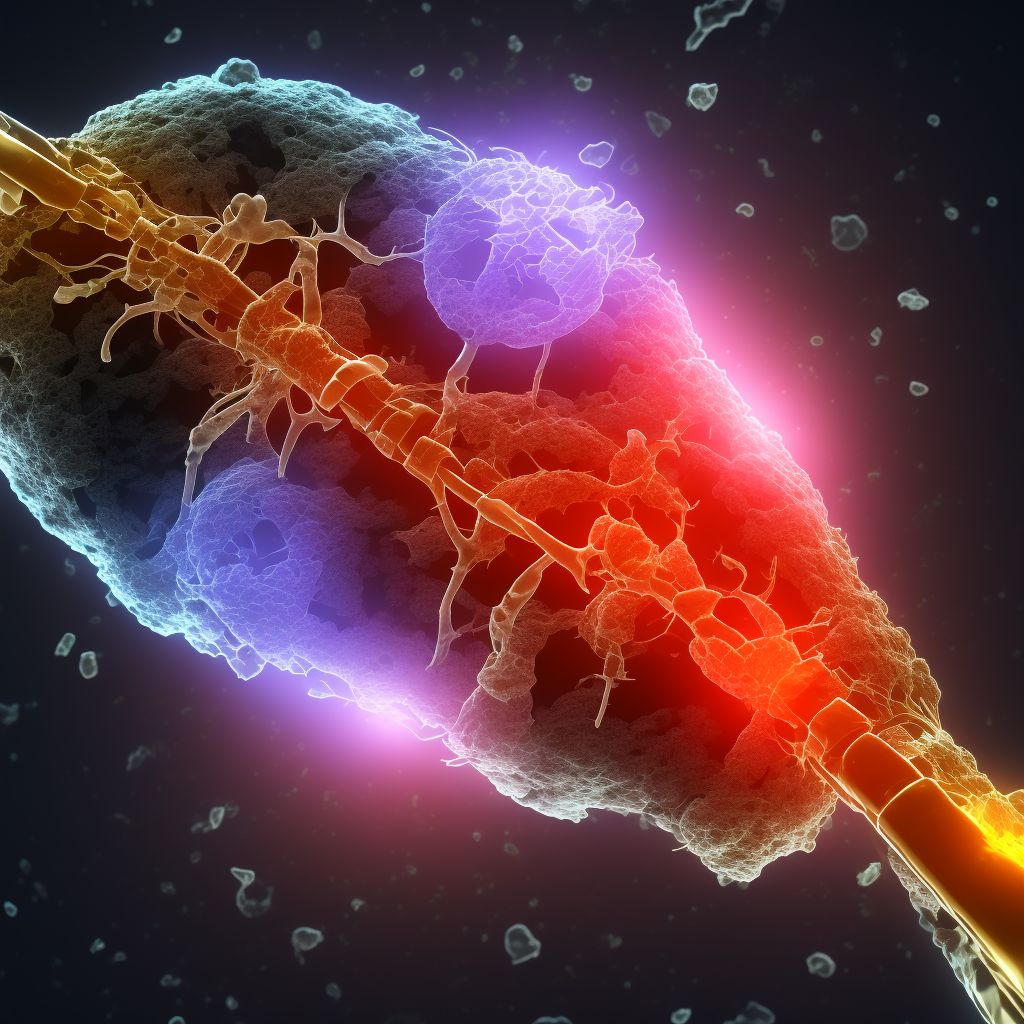
Nondisplaced fracture of medial condyle of unspecified tibia, subsequent encounter for open fracture type IIIA, IIIB, or IIIC with nonunion Save
ICD-10 code: S82.136N
Disease category: S82.136: Nondisplaced fracture of medial condyle of unspecified tibia
Nondisplaced Fracture of Medial Condyle of Unspecified Tibia: Understanding Open Fracture Types IIIA, IIIB, or IIIC with Nonunion
A nondisplaced fracture of the medial condyle of the tibia can cause significant discomfort and immobility. While fractures of this nature can vary in severity, subsequent encounters for open fracture types IIIA, IIIB, or IIIC with nonunion require careful attention and management. In this article, we will delve into the details of these fractures, their classifications, and the importance of proper treatment.
When a fracture occurs in the medial condyle of the tibia, it refers to a break in the rounded prominence at the inner side of the tibia's upper surface. While some fractures may be displaced, meaning the bone fragments have shifted, nondisplaced fractures indicate that the bone remains properly aligned.
Open fractures, on the other hand, involve the bone breaking through the skin, leaving it vulnerable to infections and complications. They are categorized into three types: IIIA, IIIB, and IIIC. These classifications depend on the extent of soft tissue damage, severity of fracture, and presence of arterial injury. Nonunion refers to a failure of the fractured bone to heal properly.
- Type IIIA: In this type of open fracture, the wound is less than 10 centimeters long, with relatively minimal soft tissue damage. The bone fragments may or may not be exposed.
- Type IIIB: Open fractures of type IIIB involve extensive soft tissue damage, often with significant loss or damage to the surrounding muscles, tendons, and blood vessels. The wound may be larger than 10 centimeters and require complex reconstructive procedures.
- Type IIIC: The most severe type, IIIC open fractures involve arterial injuries, requiring immediate vascular repair. These fractures are often associated with major soft tissue loss and require extensive surgical intervention.
Proper management and treatment of these fractures are crucial for successful healing and restoration of function. However, it's important to note that this article does not focus on treatment options, as they should be discussed with a medical professional who can provide personalized advice based on the specific case.
In conclusion, a nondisplaced fracture of the medial condyle of the tibia can lead to subsequent encounters for open fracture types IIIA, IIIB, or IIIC with nonunion. Understanding the classifications of open fractures and the potential complications associated with each type is essential for appropriate medical evaluation and treatment.
Treatment of Nondisplaced fracture of medial condyle of unspecified tibia, subsequent encounter for open fracture type IIIA, IIIB, or IIIC with nonunion:
Treatment Options for Nondisplaced Fracture of Medial Condyle of Unspecified Tibia
A nondisplaced fracture of the medial condyle of the tibia can be a painful and debilitating injury. If left untreated, it can lead to complications such as nonunion, where the fractured bone fails to heal properly. In cases of nonunion, subsequent encounters may be necessary to address the issue eff...
To see full information about treatment please Sign up or Log in